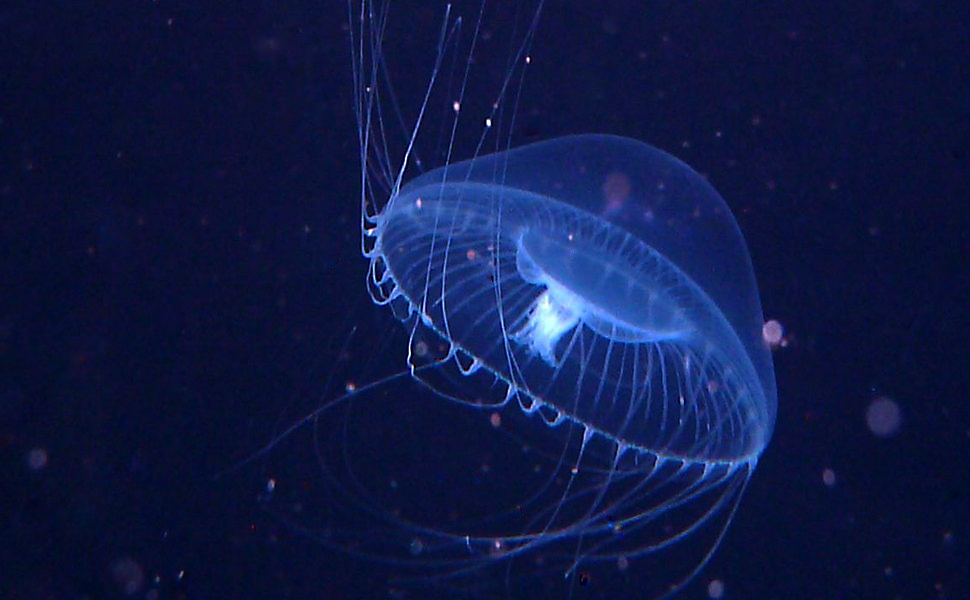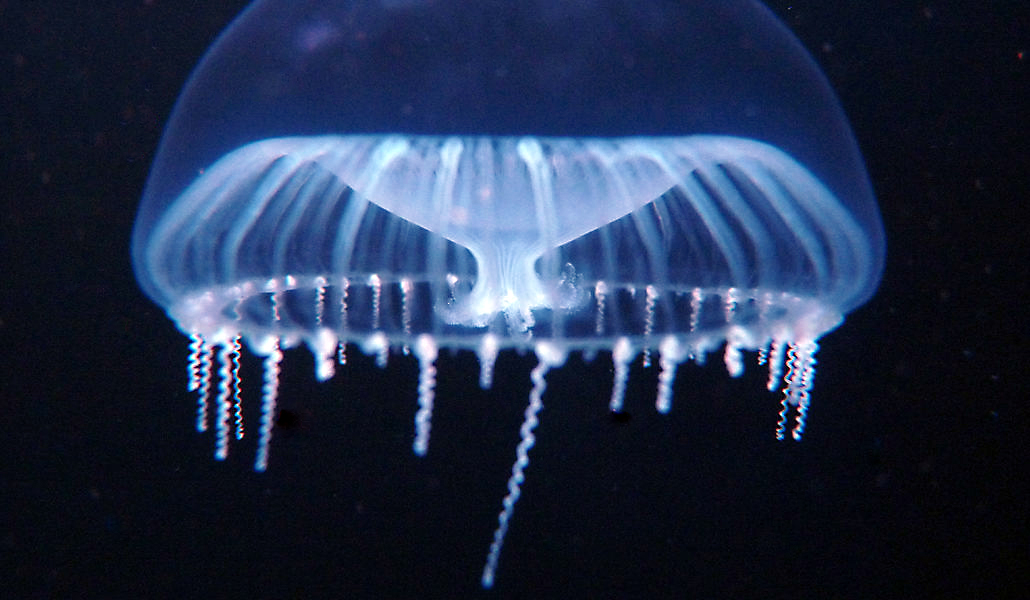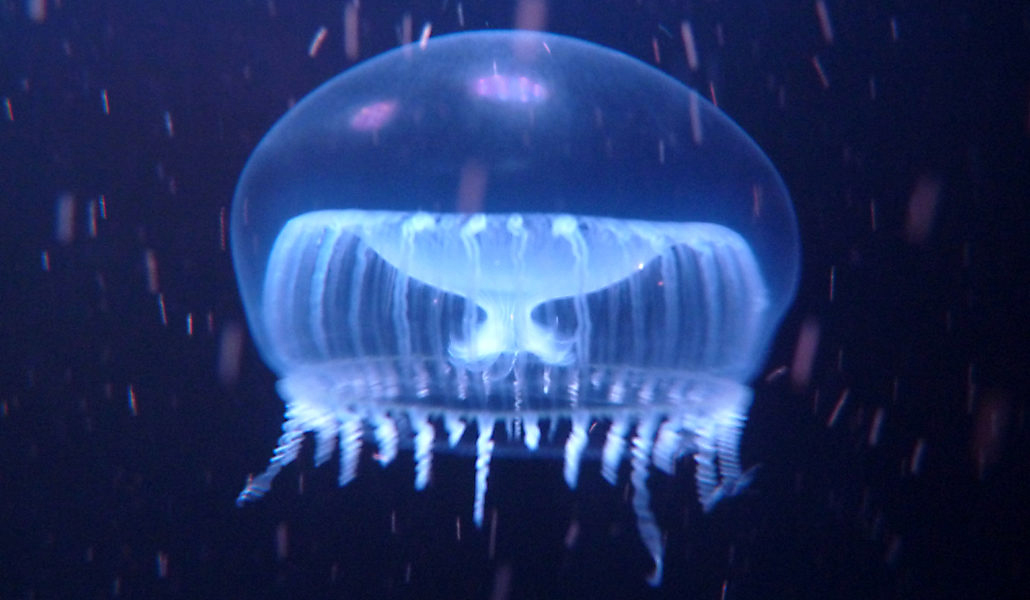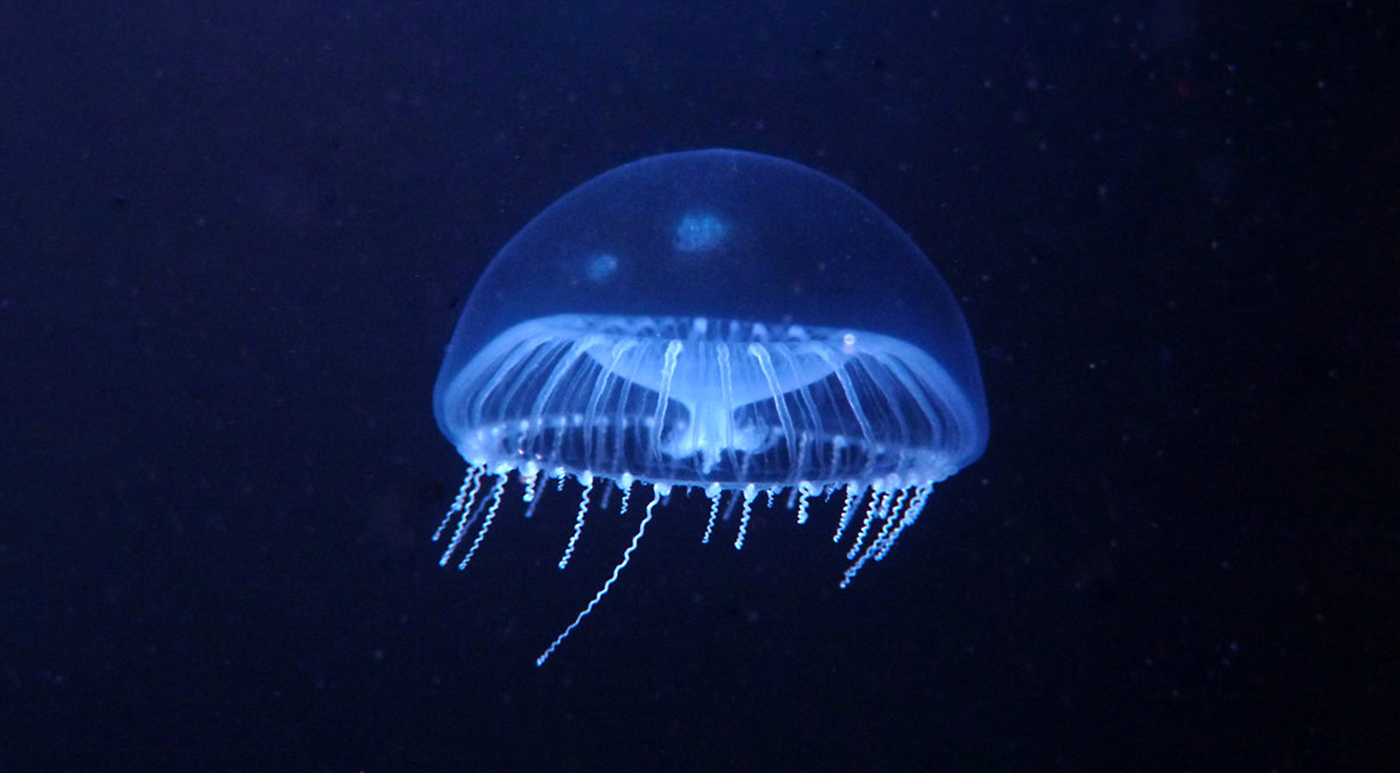Crystal Jellyfish
Author: Julia Traill
Scientific name: Aequorea victoria
Size: Bell Diameter can be up to 25cm, though the size of this jellyfish can vary depending on where it is found.
Identifying Features: They have many radial canals with more than one-hundred and fifty sticky tentacles. The tentacles are laced with nematocysts that when fired allow the jellyfish to easily catch its varying prey. It also has gonads that follow along their radial canals. They are mostly transparent but under ultraviolet light there is a bioluminescent green ring around the bottom of their umbrella.

Habitat: The hydromedusae can typically be found from spring to autumn in the Pacific waters off the coast of North America, from the Bering Sea to southern California.
Predators: Predators of the Crystal jellyfish are typically other large jellies such as the Lions Mane Jellyfish. They are also harvested by humans in order to extract the bioluminiscent protein aequorin which is used in biomedical studies.
Prey: For the most part these guys consume zooplankton as well as other soft bodied organisms including other hydromedusae, ctenophores and polychaetes. Crystal jellyfish have the ability to consume other jellyfish that are twice their size and appear to prefer comb jellies over others. They are also known to be cannibalistic so when one keeps them they must ensure there is enough room.
Reproduction: Crystal jellyfish reproduce just like any other jellyfish which involves both a sexually and asexually phase. They reproduce year-round and their polyps, which may be found in colonies, may live up to more than 2 years.
Fun Facts: Aequorea victoria produces the green fluorescent protein (GFP). This species is rarely bioluminescent in nature but by placing it under a black (UV) light the GFP can be observed. Osama Shimomura first discovered GFP and in 2008 he and his colleagues Roger Tsien and Martin Chalfie were awarded the 2008 Nobel Prize in Chemistry for both the discovery and development of the green fluorescent protein. It is important to note that many online sources continue to show unrelated species reflecting green light and inaccurately state it is this species bioluminescing.


The species was first described by Murbach and Shearer in the Annals and Magazine of Natural History in 1902 (originally named Mesonema victoria). They indicate that they were “collected in considerable numbers at the entrance of Victoria Harbour and in Puget Sound”. The specimens photographed and used in these videos were also collected off of Victoria, British Columbia.
Photographs by D. Young
Video by Darian Yap, D. Young and M. Chapple
References
Crystal jelly | Animals. (n.d.). Monterey Bay Aquarium. Retrieved October 13, 2024, from https://www.montereybayaquarium.org/animals/animals-a-to-z/crystal-jelly
Kennedy, J. (2019, May 20). Facts About the Crystal Jelly. ThoughtCo. Retrieved October 13, 2024, from https://www.thoughtco.com/crystal-jelly-profile-2291825
Wrobel, D., & Mills, C. (1998). Pacific Coast pelagic invertebrates : a guide to the common gelatinous animals. Sea Challengers.



